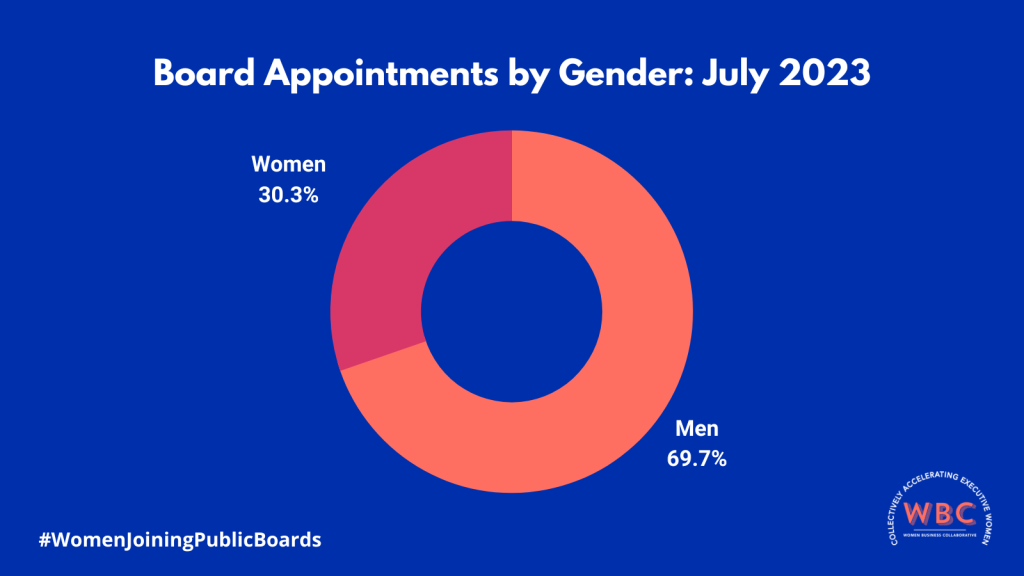July 2023 Report Summary
Companies continue to diversify board composition by appointing women to the board of public companies.
In July, women comprised 30.3% of new appointments to the boards of public companies. Public companies appointed 73 women to boards and 168 men to their boards. The pressure to increase diversity at the board level remains critical to ensuring the advancement of women moving into board positions.
appointed 73 women to boards and 168 men to their boards. The pressure to increase diversity at the board level remains critical to ensuring the advancement of women moving into board positions.
While only 18 of the newly appointed women board members (24.66% of new women appointments) chose to self-disclose their race, boards must continue to diversify and the data continues to highlight the value of disclosure. In July, Asian/Pacific Islander women took the lead in board appointments with 9 women being appointed to public boards, making up 12.33% of all appointments. They are closely followed by 5 Black/African American women (6.85%). Companies such as The Children’s Place, Inc., Empire State Realty Trust, Inc., and Block, Inc. are leading the way as part of a phenomenal group that have appointed diverse women to their boards.

Of the 73 women appointed to the boards of public companies, 36, or 49.32%, were first time board appointments. In July, Healthcare companies led the way in the appointment of women followed by Technology Companies, with appointed women filling 27.40% of board seats at Healthcare companies and 17.81% at Technology companies. In the Technology industry, we see strides being made by women at companies like Lyft, Inc.
Equilar and WBC are tracking and analyzing the growth and rotation of board seats on public companies and the expanding candidate pool. We will continue to track and analyze not only the numbers, diversity and profile of the women being appointed to boards; but the companies and industries in which female board members are present and how many of the overall board seats are held by women.

Equilar and WBC are tracking and analyzing the growth and rotation of board seats on public companies and the expanding candidate pool. We will continue to track and analyze not only the numbers, diversity and profile of the women being appointed to boards; but the companies and industries in which female board members are present and how many of the overall board seats are held by women.
